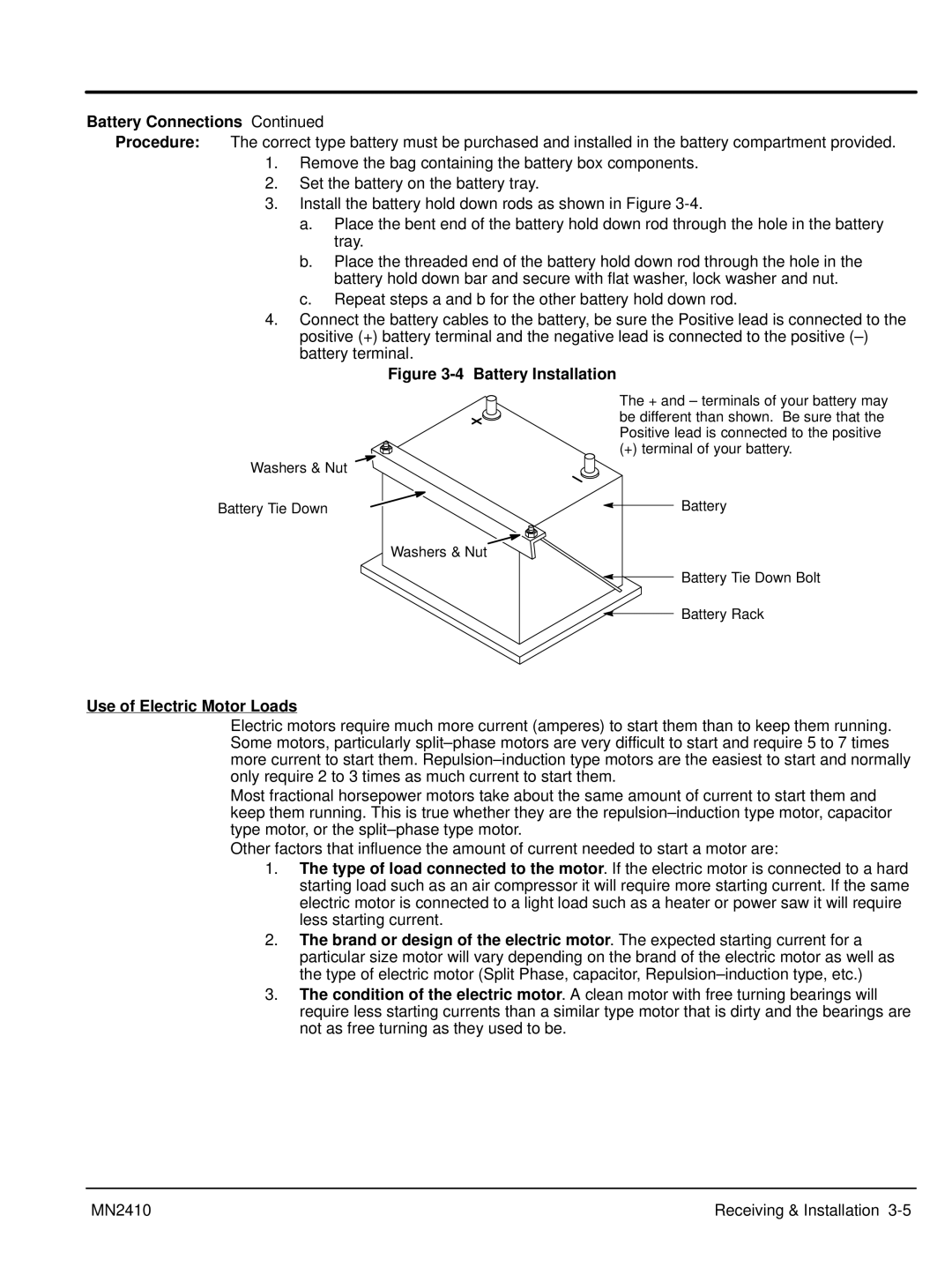
Battery Connections Continued
Procedure: The correct type battery must be purchased and installed in the battery compartment provided.
1.Remove the bag containing the battery box components.
2.Set the battery on the battery tray.
3.Install the battery hold down rods as shown in Figure
a.Place the bent end of the battery hold down rod through the hole in the battery tray.
b.Place the threaded end of the battery hold down rod through the hole in the battery hold down bar and secure with flat washer, lock washer and nut.
c.Repeat steps a and b for the other battery hold down rod.
4.Connect the battery cables to the battery, be sure the Positive lead is connected to the positive (+) battery terminal and the negative lead is connected to the positive
Figure 3-4 Battery Installation
Washers & Nut
Battery Tie Down
The + and – terminals of your battery may be different than shown. Be sure that the Positive lead is connected to the positive
(+) terminal of your battery.
Battery
Washers & Nut
Battery Tie Down Bolt
Battery Rack
Use of Electric Motor Loads
Electric motors require much more current (amperes) to start them than to keep them running. Some motors, particularly
Most fractional horsepower motors take about the same amount of current to start them and keep them running. This is true whether they are the
Other factors that influence the amount of current needed to start a motor are:
1.The type of load connected to the motor. If the electric motor is connected to a hard starting load such as an air compressor it will require more starting current. If the same electric motor is connected to a light load such as a heater or power saw it will require less starting current.
2.The brand or design of the electric motor. The expected starting current for a particular size motor will vary depending on the brand of the electric motor as well as the type of electric motor (Split Phase, capacitor,
3.The condition of the electric motor. A clean motor with free turning bearings will require less starting currents than a similar type motor that is dirty and the bearings are not as free turning as they used to be.
MN2410 | Receiving & Installation |
